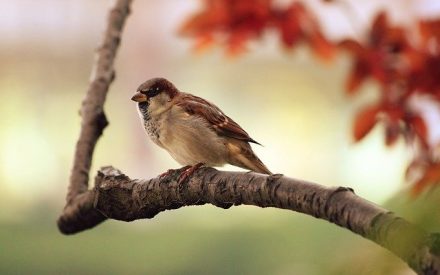Attract birds to your backyard for easy mood lift
by Judy Stringer
If you’ve ever marveled at the collection of birds congregating around a feeder or been delighted to spot a species you haven’t seen before, you are not alone.
According to the U.S. Fish & Wildlife Service, over 45 million Americans take part in bird-watching each year, and the birding brigade appears to be growing as more is understood about the health benefits associated with watching and listening to our feathered friends.
An October 2022 study in Scientific Reports, for example, reported that seeing or hearing birds improved people’s mental wellbeing for up to eight hours. Other studies have linked bird abundance around homes and in neighborhoods to a lower prevalence of anxiety and depression and a higher prevalence of happiness.
While some travel far and wide in pursuit of elusive bird finds, creating a bird-friendly yard is a great way for aging adults to enjoy these benefits closer to home.
The National Wildlife Federation recommends the following steps to attract birds:
1. Provide water year-round
A simple birdbath is a great start. Change water every two to three days in summer and use a heater in the winter. Place the water container about 10 feet from dense shrubs or other cover that predators may use.
2. Install native plants
Select a variety of native plants to offer year-round food in the form of seeds, berries, nuts and nectar. Try to recreate the plant ecosystem native to your area. Evergreen trees and shrubs provide excellent cover through all seasons, if they are part of your local ecosystem.
3. Eliminate insecticides in your yard
Following organic practices helps wildlife. Insects are the primary source of food for many bird species and are an important source of protein and fats for growing juvenile birds.
4. Keep dead trees
Dead trees provide cavity-dwelling places for birds to raise young and act as a food source by collecting insects. Many species will also seek shelter from bad weather inside these hollowed out trees.
5. Put out nesting boxes
Make sure the nesting boxes have ventilation holes at the top and drainage holes below. Do not use a box with a perch, as house sparrows are known to sit on a perch and peck at other birds using the nesting box. Be sure to monitor the boxes for invasive animal species known to harm or out-compete native species.
6. Build a brush pile in a corner of your yard
Start with larger logs and top with smaller branches. Some birds will hunt, roost or even nest in brush piles.
7. Offer food in feeders
Bird feeders are great sources of supplemental food during times of food scarcity, and also enhance bird-viewing opportunities.
8. Remove invasive plants from your wildlife habitat
Many invasive plants out-compete the native species favored by birds, insects and other wildlife. Check with your local U.S. Department of Agriculture Cooperative Extension System office for information on plant species to avoid.
9. Reduce your lawn area
Lawns have little value to birds or other wildlife, and they require more energy for mowing, applying fertilizers and watering. ∞

